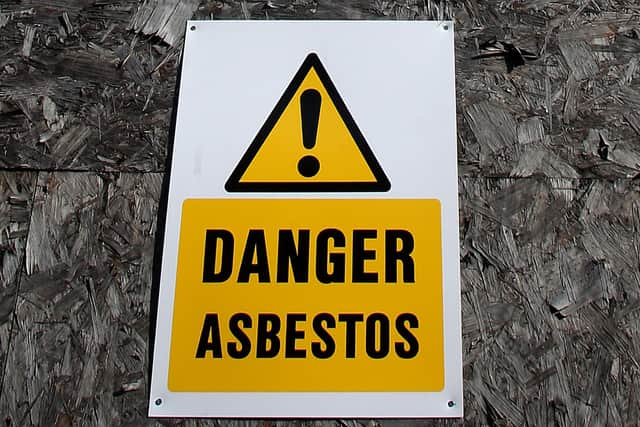Leader: Asbestos should not be in NHS buildings
These facts make it all the more shocking that the material has been found in at least 695 NHS buildings in Scotland.
A report said all the buildings for which the NHS is responsible in Dumfries and Galloway and the Greater Glasgow and Clyde area were found to contain asbestos.
Advertisement
Hide AdAdvertisement
Hide AdConfronted with these findings, a Scottish Government spokesman said: “Asbestos is only dangerous when disturbed, which is why it is important it remain in-situ while it is in ‘good’ condition.”


The thousands of people who work and receive treatment in these buildings may take a different view.
The STUC, the Trades Union Congress and the All Party Parliamentary Group on Occupational Safety and Health, who carried out the research, are right to raise concerns and demand an urgent plan for stepping up asbestos removal.
Use of asbestos was banned in 1999 but it is still found in many older buildings, where it was used for insulation, flooring and roofing.
Mesothelioma, a type of incurable cancer that mainly affects the lungs, can develop from asbestosis. The disease typically develops more than 20 years after exposure.
It is simply not good enough to leave this material in place in hospitals, hoping it remains undisturbed.
The intense pressures on NHS resources are well documented, but this is an area where there surely must be a greater sense of urgency.
MP Ian Lavery, chairman of the UK parliament’s asbestos group, rightly describes the findings as “shocking”.
Advertisement
Hide AdAdvertisement
Hide AdHe said they expose the “extent of risk to dangerous carcinogenic exposure in the very places designed to nurture our health”.
He said: “If asbestos is in a building, it will at some point become dangerous if it’s disturbed, so we need plans in place for its removal from all public buildings.”
The removal of asbestos would be not only in the best interests of patients and staff, but also in the best long-term interests of the NHS as a whole. If we are to have any hope of cutting the rate of mesothelioma, we must act now to rid public buildings of its primary cause.